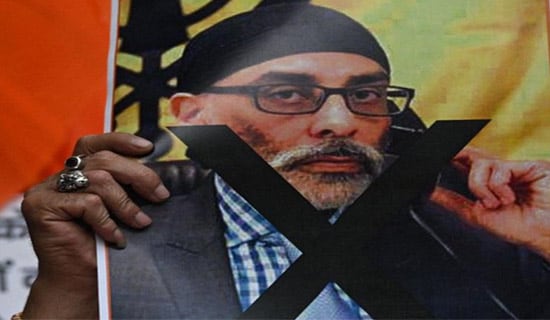The following is an editorial by Dr. Nimrod Raphaeli, editor of the MEMRI Economic Blog (www.memrieconomicblog.org). Readers may subscribe to a free weekly newsletter, which contains highlights from the material published by the Economic Blog each week, either by clicking on "subscribe" on the website (www.memrieconomicblog.org) or by sending an email to economiceditor@memri.org with the subject line: Subscribe
Like Hamlet, the oil-rich Gulf countries face a dilemma: to peg or not to peg. This dilemma – whether to keep their national currencies pegged to the dollar as a single anchor currency or whether to opt for other alternatives – is profound and has far-reaching monetary implications. Clearly, the single anchor is no longer strong enough to stabilize the monetary system in a deteriorating monetary environment.
That the U.S. dollar has been depreciating against major currencies in the last three years is simply a fact having to do with mounting national debt. The dollar has depreciated even against the Iraqi dinar and against another "anchor" currency, the Iranian riyal.
Save for those who fly to London, Paris or Berlin for a weekend of leisure and shopping, the overwhelming majority of Americans have not been materially affected by the decline in the value of the dollar, at least not yet. In 1973, the U.S. went through a similar currency depreciation. When the leading European countries, in the pre-Euro age, complained to the U.S. administration about the harm wrought to their economies by the steep decline of the dollar, then-secretary of treasury and former Texas governor John Connolly replied, "The dollar is our currency and your problem." In a globalized economy, however, the dollar is everyone’s problem.
Options Available
The six member states of the Gulf Council on Cooperation (Saudi Arabia, the United Arab Emirates, Qatar, Kuwait, Bahrain and Oman) chose to peg their national currencies to the dollar both because their oil was priced in dollars and because they sought the stability of a strong reserve currency. With the dollar weakening in the last three years, most notably in 2007, pressures have mounted on the monetary authorities of the GCC countries to terminate the dollar peg. Kuwait was the first to do so in May of this year by deciding to peg its dinar to a basket of currencies, but it has never revealed the weight of the dollar in the basket.
An article entitled "Time to Break Free," published in The Economist (November 24-30 2007), raises the real concern "that the end of the Gulf states' dollar peg would send jittery investors into a panic." But, the article concludes, "with oil prices rising and the dollar falling, the dangers of inaction are greater. The Gulf states need to get rid of their dollar peg now." With Kuwait moving away from the dollar peg, and with pressures mounting internally "to do something" to combat rising imported inflation, the monetary authorities of the other five members of the GCC are likely to move in a synchronized manner to seek alternatives to the dollar peg.
SUPPORT OUR WORK

Gulf countries have three alternatives:
· Free Floating
· Peg the local currency to a basket of currencies, something akin to the IMF's SDRs (Special Drawing Rights)
· One-time Revaluation
Free floating: Currency value would be allowed to fluctuate according to the foreign exchange market. The U.S. and Canadian dollars are examples of free floating currencies. Countries whose exports are concentrated in a narrow range of goods, often primary commodities like oil, are subject to structural vulnerability and volatile exchange rates. Such an exchange regime might not go well with most of the Gulf conservative governments that aspire to stability and, hence, it is the course least likely to be adopted.
Peg to basket of currencies: The one viable anchor, the dollar, would be replaced by a basket of currencies, generally heavily weighted in favor of the dollar (60-70 percent). The Saudis, in particular, would likely be reluctant to adopt it because they would not want to be seen as giving in to the Iranian president and because, in any case, the dollar component of the basket would likely be considerable.
One-time Revaluation raises the value of currency in relation to a foreign currency in a fixed exchange rate. In practice, this means that the exchange value of Saudi riyal or the Emarati dirham would increase by a certain percentage, most likely in the range of 3-5 percent, but otherwise it would remain pegged to the dollar. We believe this last alternative is the one most likely to be favored by Saudi Arabia and perhaps even by two other small economic tigers – the UAE and Qatar.
From a political perspective, there is a serious question as to whether Saudi Arabia, the largest economy in the region, will wish to deliver a quick victory to the Kingdom’s nemesis, Iran’s president Mahmoud Ahmadinejad, who, together with his "brother" Hugo Chavez, called in the recent oil summit in Riyadh to ditch the dollar "as a worthless piece of paper." Saudi Arabia may also be thinking about the harmful effect a decision to put an end to the dollar peg would have on the American currency and its strategic relations with the U.S. [See our previous editorial on "The Oil Summit Rebuffs Iran and Venezuela," http://www.memrieconomicblog.org/bin/content.cgi?comment=20.]
The next few days will be intriguing as well as crucial for the status of the dollar.




